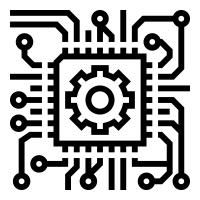What is Aerospace Engineer?
Perform engineering duties in designing, constructing, and testing aircraft, missiles, and spacecraft. May conduct basic and applied research to evaluate adaptability of materials and equipment to aircraft design and manufacture.
Minimum education level
PT3
SPM
STPM
Diploma
Degree
Average Salary
Example of a Job Position
Task
Knowledge
Mathematics
Knowledge of arithmetic, algebra, geometry, calculus, statistics, and their applications.
Computers and Electronics
Knowledge of circuit boards, processors, chips, electronic equipment, computer hardware and software, including applications and programming.
Engineering and Technology
Knowledge of practical applications in engineering and technology. This includes the application of principles, techniques, procedures and equipment for designing and producing various goods and services.
Design
Knowledge of techniques, equipment and design principles including in producing precision technical plans, blueprints, drawings and models.
Physics
Knowledge and predictions about the principles of physics, law, relations between the two, and applications for understanding liquids, materials, atmospheric, mechanical, electrical, atomic, atomic sub-structures and processes.
Skills
Complex Problem Solving
Identify complex problems and review related information in order to develop and evaluate options and solutions that can be applied.
Critical Thinking
Using logic and reasoning to identify the strengths and weaknesses of alternative solutions, conclusions, or approaches to the problems handled
Reading Understanding
Understand sentences and paragraphs written in work documents.
Science
Use scientific rules and methods to solve problems.
Capability
-
1
Information Ordering - The ability to arrange things or actions in a certain order or pattern according to a specific rule or set of rules (e.g., patterns of numbers, letters, words, pictures, mathematical operations).
-
2
Written Comprehension - The ability to read and understand information and ideas presented in writing






